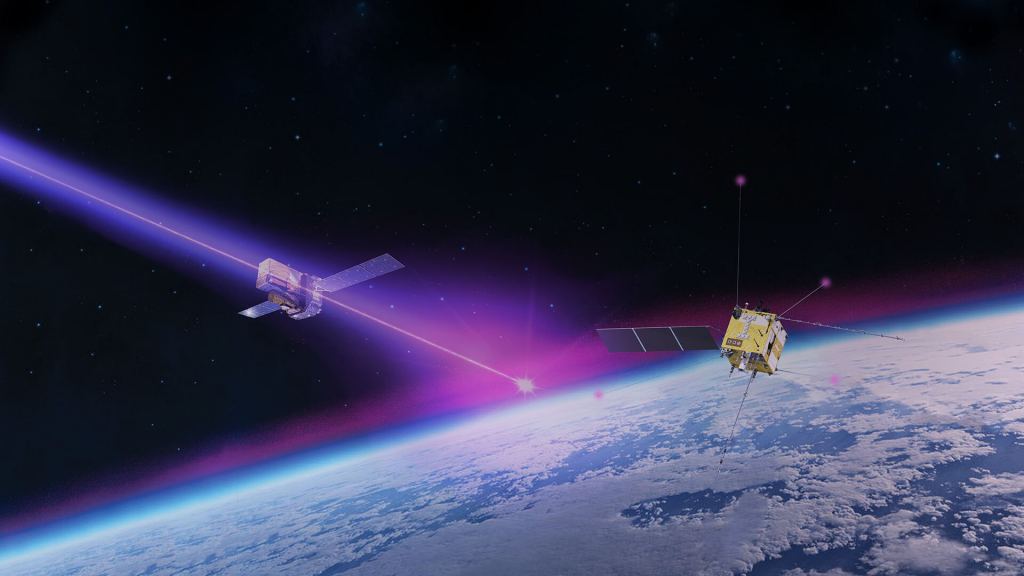You’d think that something happening billions of light-years away wouldn’t affect Earth, right? Well, in 2002, a burst of gamma rays lasting 800 seconds actually impacted our planet . They came from a powerful and very distant supernova explosion. Its gamma-ray bombardment disturbed our planet’s ionosphere and activated lightning detectors in India.
This particular gamma-ray burst (GRB) occurred in a galaxy almost 2 billion light-years away (and took two billion years to reach us). Not only did ground-based detectors record the bombardment, but satellites sensitive to high-energy outbursts “saw” it, too. That included the European Space Agency’s International Gamma-Ray Astrophysics Laboratory (INTEGRAL) mission.
It typically records gamma-ray bursts on a daily basis, but this one—named GRB 221009A—outshone all the rest. GRBs this strong happen (on average) about once every 10,000 years, so this was one that caught everyone’s attention. “It was probably the brightest gamma-ray burst we have ever detected,” says Mirko Piersanti, University of L’Aquila, Italy, and lead author of a paper analyzing the event.
Most of the time, radiation from the Sun bombards our planet. That’s often strong enough to affect the ionosphere. That’s an atmospheric layer that bristles with electrically charged gases called plasma.
It stretches from around 50 km to 950 km in altitude above the surface. There’s a “top-side ionosphere” (which lies above 350 km) and a “bottom-side ionosphere”) which lies below that. Scientists are pretty familiar with how the Sun treats this region of the atmosphere, particularly during periods of heavy solar activity.
This GRB blast triggered instruments generally reserved for studying the immense explosions in the Sun’s atmosphere known as solar flares. “Notably, this disturbance impacted the very lowest layers of Earth’s ionosphere, situated just tens of kilometers above our planet’s surface, leaving an imprint comparable to that of a major solar flare,” says Laura Hayes, research fellow and solar physicist at ESA. That imprint basically was an increase in ionization in the bottom-side ionosphere.
It left an imprint in low-frequency radio signals that move between Earth’s surface and the lowest levels of the ionosphere. “Essentially, we can say that the ionosphere ‘moved’ down to lower altitudes, and we detected this in how the radio waves bounce along the ionosphere,” explained Laura. Past GRBs bothered the bottom-side ionosphere but didn’t always disturb the topside.
Scientists just assumed that by the time it reached Earth, the blast from a GRB didn’t have the “oomph” to change that part of the ionosphere. GRB 221009A proved that idea wrong. Thanks to data from the orbiting China Seismo-Electromagnetic Satellite (CSES), scientists saw a strong disturbance in the upper ionosphere.
It created a strong electric field variation and was the first time scientists saw this connected to a GRB. The result is the first-ever top-side ionospheric measurement of electric field variations triggered by a gamma-ray outburst at cosmic distances. INTEGRAL and other spacecraft continually record GRBs from around the Universe.
Have they all affected our ionosphere in some way? Is there a way to find out? Now that scientists know what ionospheric effects to look for, they can search the data to find answers. Data from INTEGRAL, and CSES will be particularly useful. They should be able to correlate it with other GRBs seen since 2018.
That’s when CSES was launched. Evidence of ionospheric disturbances from GRBs goes back as far as 1988. That’s when the effects of a 1983 gamma-ray burst were first reported.
Scientists now have an array of ground-based and space-based detectors—such as Swift, Fermi, MAXI, AGILE, INTEGRAL, and CSES—gave strong detections of the emissions from GRB221009A. This kind of disturbance from a very distant event poses a question: what would happen if such an explosion happened “closer to home”? A supernova in our own galaxy, for example, releasing a huge burst of gamma rays, could very well “reach out and touch” Earth in a drastic way. “There has been a great debate about the possible consequences of a gamma-ray burst in our own galaxy,” says Mirko Piersanti.
For one thing, a close-by and strong GRB would have drastic effects on our ionosphere, much stronger than a typical solar flare. It could also do some significant damage to the ozone layer (which provides a protective shield against radiation from the Sun). That would allow a lot more ultraviolet (UV) to reach the surface than we’re accustomed to experiencing.
It’s possible (although not proven) that some of Earth’s past extinction events could be related to an increase in UV radiation on the surface. Earth’s ozone layer is a first-line defense mechanism against radiation, which is why people stopped using gases such as chlorofluorocarbons. They were destroying the ozone layer, allowing in more UV radiation.
This affected the atmosphere as well as people, plants, and animals. At least one research paper looked at ozone depletion by GRBs by studying what happens over the polar regions. Increased UV radiation produces changes in the middle atmosphere, including the creation of ground-level ozone, which can damage life in high concentrations.
A burst that sent radiation into the south polar regions is suggested as one reason that the Ordovician extinction happened around 445 million years ago. An estimated 85 percent of species alive at that time were wiped out. If a nearby GRB was involved, that might explain the Ordovician event and may offer insight into other mass extinctions.
It’s not far-fetched to think that some of them may have had cosmic triggers. Those could have affected life on Earth more powerfully than the two-billion-year-old bombardment from GRB 221009A. Blast from the Past: Gamma-ray Burst Strikes Earth from Distant Exploding Star Evidence of an Upper Ionospheric Electric Field Perturbation Correlated with a Gamma Ray Burst How Deadly Would a Gamma-ray Burst Be?.
From: universetoday
URL: https://www.universetoday.com/164557/a-gamma-ray-burst-disturbed-the-earths-ionosphere/



